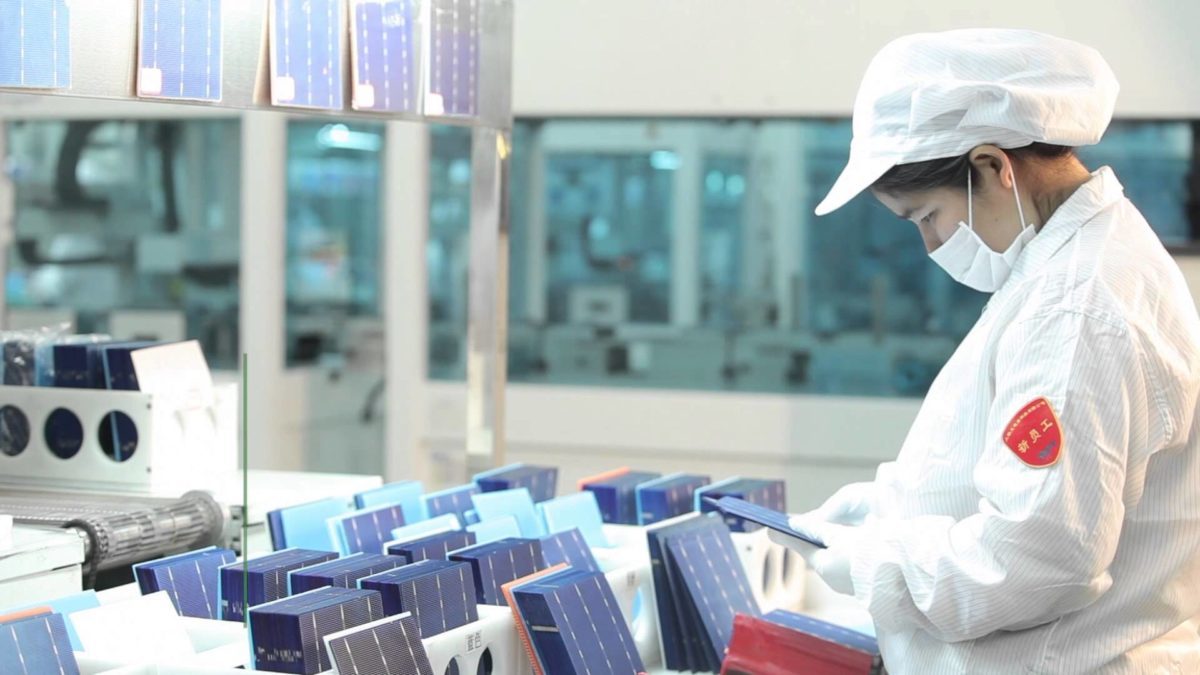With our next webinar due on Thursday, we discuss with Andrea Viaro, head of technical service for Europe at Jinko Solar; Paul Grunow, of testing lab PI Berlin; and Stefan Roest, from testing company Eternal Sun, how module manufacturers can mitigate the effects LID and LeTID and how the light-induced degradation of the modules can be controlled in tests. We will explore the physical mechanisms behind LeTID and LID, and discuss solutions at the production stage to control and reduce LID and LeTID. Jinko recently announced it is putting its products through a new set of testing standards, details of which Viaro will share during the webinar. We will also evaluate how well the tests help secure return on investments.
Here, Andrea Viaro answers some of the questions asked by participants who have registered to join the webinar. More questions will be answered on Thursday.
When buying Jinko modules, how much initial LID and LeTID should customers expect in the first year
Andrea Viaro: LID occurs during the very initial period of operation of the panel in the PV field and is already [factored] into the first-year maximum module power reduction, which is 2.5% for polycrystalline technology and 3% for monocrystalline technology … LeTID might occur over a longer period of time, depending on module operating conditions and … is anyway covered by the linear power warranty up to 25 years for monofacial products, and up to 30 years for bifacial products.
pv magazine webinar
What is the difference between LeTID and LID?
LID stands for light-induced degradation and LeTID stands for light and elevated temperature-induced degradation. LID intrinsically develops as [a] stabilization process, particularly for P-type crystalline silicon solar cells, and its speed strictly depends on module light intensity exposure, while for [the] LeTID phenomenon, module operating temperature plays a key role to determine if and at what speed the phenomenon might develop.
Sometimes we hear that the mechanisms behind LID are not well understood. Should that be a concern?
LID and LeTID follow different mechanisms, with various factors involved and some of them still to be completely defined, especially for the latter. Nonetheless, there are different methods which enable [the] control [of] both phenomena, specifically focused on their root causes, which are already implemented in production and are proven to effectively limit them within expected levels. We will address such aspects in detail during the webinar.
Is it possible for manufacturers to prevent these degradation effects from the outset, or is regeneration treatment at the end of cell production still the best choice? Which way is Jinko Solar going?
P-type silicon cells have, unavoidably, a certain level of initial degradation which is in any case well controlled in mass production thanks to mature and reliable stabilization processes. A possible solution that seems to be effective in reducing it even further – and that we are also studying and considering transferring into mass production despite [it being] more expensive – is to substitute boron doping with gallium. On the other hand, N-type silicon will be the solution – that is also in our pipeline – that will enable [us] to reduce initial cell efficiency reduction to the minimum level possible.
You are focusing on the production of mono PERC modules and even n-type modules. Why is polycrystalline PERC not an option for Jinko?
PERC technology applied on monocrystalline silicon cells enables … higher PV conversion efficiency compared to polycrystalline … surely it makes economic sense to maximize in this way its potential, aiming to reduce as much as possible the resulting LCOE [levelized cost of electricity] level. Moreover, the apparently lower stability against LeTID phenomenon still leaves doubts [about] the reliability [of] PERC polycrystalline cells in mass production. The reason for that is also related to the different degradation mechanisms, which somehow make [less] effective on polycrystalline the same stabilization processes applied to monocrystalline. N-type silicon technology appears to be a much more promising alternative … granted that it will be possible to reduce its manufacturing costs leveraging on economies of scale.
This content is protected by copyright and may not be reused. If you want to cooperate with us and would like to reuse some of our content, please contact: editors@pv-magazine.com.



This is very informative article and great to know the new knowledge about the LED and LeTID phenomenon and clear the doubts about PV conversion.